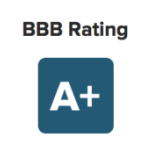If you are the subject of a restraining order and would like to have it vacated, this relief is available under New Jersey Law. In this regard, a final restraining order can be dissolved, removed and/or vacated in one of three ways. It is crucial to keep in mind, however, that the process of obtaining this relief is both complicated and difficult as it involves a formal petition with the court wherein the defendant bears the burden of proof. If you are interested in seeking to dissolve a restraining order, this is definitely a job for an attorney, preferably someone who has experience handling motions of this nature. Our lawyers have the qualification you need in this regard and have filed many motions to remove final restraining orders in the past. Call our Cranford firm for immediate consultation, free of charge, to discuss how we can assist you in removing a restraining order.
As previously stated, there are three (3) ways to vacate a restraining order. The first option for dissolving a restraining order is by filing a motion with the court with notice to the victim. To achieve success, the defendant must demonstrate that the circumstances are now such that there no longer is any threat that necessitates the restraints (e.g. the underlying facts no longer exist and/or the defendant has been rehabilitated). A defendant can file a motion to dissolve after one year from the date of issuance of the restraining order. The defendant must provide sufficient factual evidence that the circumstances surrounding the parties’ relationship substantially changed since the court issued the order. If the defendant can show a change in circumstances in his motion, then the court will grant a hearing to consider whether to amend or dissolve the restraining order.
The second and easiest way to dissolve a restraining order is by consent. What this typically involves is the victim voluntarily appearing in court and placing their consent on the record. The court will typically require that the victim meet with a domestic violence counselor before consenting and further that he/she no longer fears the defendant will commit domestic violence.
The third and final way to remove restraints is through substantial reconciliation. What this contemplates is a factual showing the the parties to the restraining order have, for all intents and purposes, disregarded the limitations and resumed their relationship to such an extent that it would be unfair to continue to enforce the limitations against the defendant. The reconciliation must be more than a single intimate instance. The individuals must show to the court a pattern of behavior that renders the restraining order inappropriate or unnecessary. In cases of reconciliation the court will advise the plaintiff of the cycle of violence and the potential for future abuse.
Dissolving A Restraining Issued in Elizabeth NJ
If your interest is success, an application to vacate a restraining order isn’t something to be filed pro se (i.e. without an attorney). The process is very involved, especially in contested proceedings, and your best opportunity for removing the restraints is with experienced counsel at your side. Our firm, which was one of the largest criminal defense firms in the state, routinely appears in Elizabeth and also has considerable experience vacating domestic violence orders. Call us anytime 24/7 at 908-272-1700 to discuss your case with an attorney on our team.












